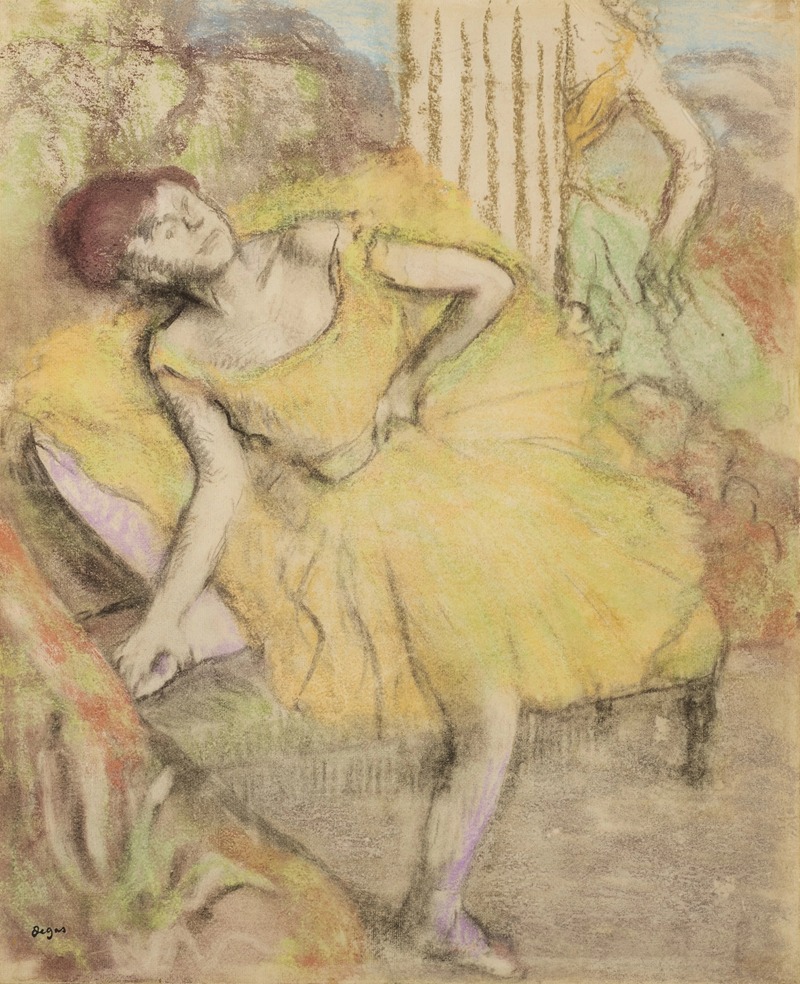
Danseuse au repos
A hand-painted replica of Edgar Degas’s masterpiece Danseuse au repos, meticulously crafted by professional artists to capture the true essence of the original. Each piece is created with museum-quality canvas and rare mineral pigments, carefully painted by experienced artists with delicate brushstrokes and rich, layered colors to perfectly recreate the texture of the original artwork. Unlike machine-printed reproductions, this hand-painted version brings the painting to life, infused with the artist’s emotions and skill in every stroke. Whether for personal collection or home decoration, it instantly elevates the artistic atmosphere of any space.
Danseuse au repos (translated as Dancer at Rest) is a pastel artwork created by the French artist Edgar Degas, who is widely recognized as one of the most prominent figures of the Impressionist movement. Degas, known for his fascination with the world of ballet, produced numerous works depicting dancers, both on stage and in moments of quiet reflection. This particular piece, Danseuse au repos, exemplifies his mastery in capturing the grace and subtlety of movement, as well as the intimate, behind-the-scenes moments of a dancer's life.
The artwork portrays a ballerina seated in a relaxed pose, her body slightly leaning forward, with her head resting on her hand. She is dressed in a tutu, and the soft, layered textures of the fabric are rendered with remarkable detail. The composition is intimate and informal, offering a glimpse into the physical demands and moments of respite in a dancer's routine. Degas's use of pastel in this work is particularly notable, as it allowed him to achieve a delicate interplay of light and shadow, as well as a vibrant yet nuanced color palette. The soft, blended strokes of pastel create a sense of immediacy and liveliness, while also emphasizing the tactile quality of the medium.
Degas's interest in ballet dancers was not merely aesthetic but also deeply rooted in his desire to explore human movement and form. He often visited the Paris Opéra and its rehearsal rooms, where he observed dancers practicing and resting. These observations informed many of his works, including Danseuse au repos. Unlike some of his more dynamic compositions that depict dancers mid-performance, this piece focuses on a quieter, more introspective moment, highlighting the physical and emotional toll of a dancer's profession.
The exact date of creation for Danseuse au repos is not definitively known, but it is generally attributed to the late 19th century, during the height of Degas's career. The artwork reflects his mature style, characterized by a keen attention to detail, innovative use of pastel, and a deep understanding of his subjects. Degas's works often blurred the line between realism and impressionism, and this piece is no exception, combining realistic details with a sense of spontaneity and movement.
Today, Danseuse au repos is considered one of Degas's iconic representations of ballet dancers. It is housed in the Musée d'Orsay in Paris, France, which holds an extensive collection of Degas's works. The painting continues to be celebrated for its technical brilliance and its ability to convey the quiet beauty and humanity of its subject.


















